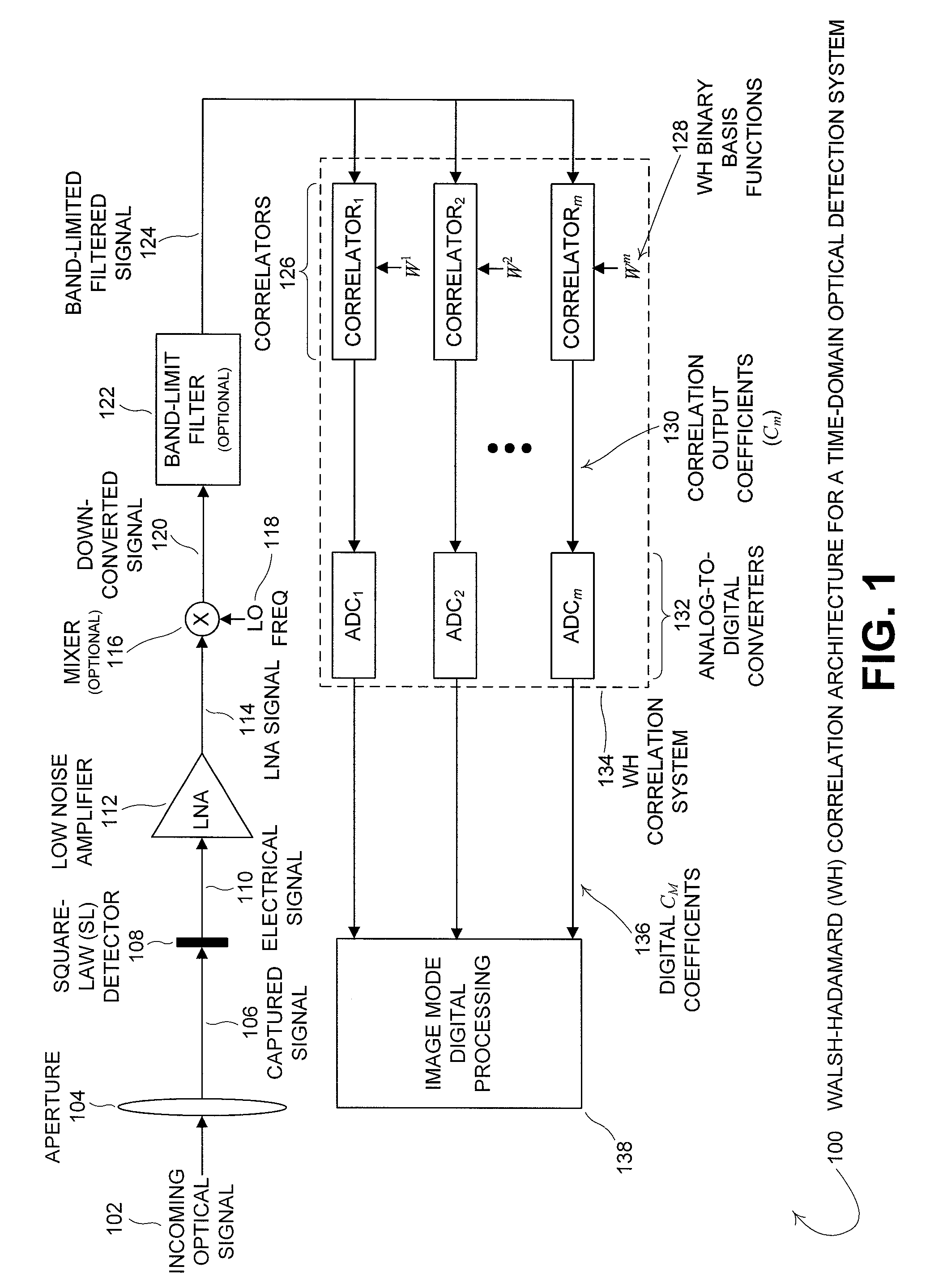Hadamard multimode optical imaging transceiver
a multi-mode optical imaging and transceiver technology, applied in the field ofhadamard multi-mode optical imaging transceiver, can solve the problems of intrinsic difficulty in matching the spatio-temporal states of objects and reference fields, loss of conversion efficiency, and hindering the practical implementation of coherent detection technology at short wavelengths
- Summary
- Abstract
- Description
- Claims
- Application Information
AI Technical Summary
Benefits of technology
Problems solved by technology
Method used
Image
Examples
Embodiment Construction
[0029]FIG. 1 is a schematic illustration of a Walsh-Hadamard (WH) correlation architecture 100 for a time-domain optical detection system of an embodiment. While feasibility of utilizing hybrid fields for synthesis of multimode detection has been experimentally established, the interferometric schemes required for the generation and detection of frequency-domain hybrids proved cumbersome in implementation. However, time-domain hybrid fields have not been explored and, as demonstrated below, time-domain hybrid fields based on time-frequency duality appear to be useful. In contrast to a coherent process which detects field amplitude through interference of source and reference fields, a time-domain process may measure field intensity via square-law detection followed by (interferometric) temporal correlation. In other words, the reference field is replaced by a reference scalar (e.g., voltage, current, charge, or equivalent photonic signal) mitigating short wavelength spatial coherenc...
PUM
 Login to View More
Login to View More Abstract
Description
Claims
Application Information
 Login to View More
Login to View More - R&D
- Intellectual Property
- Life Sciences
- Materials
- Tech Scout
- Unparalleled Data Quality
- Higher Quality Content
- 60% Fewer Hallucinations
Browse by: Latest US Patents, China's latest patents, Technical Efficacy Thesaurus, Application Domain, Technology Topic, Popular Technical Reports.
© 2025 PatSnap. All rights reserved.Legal|Privacy policy|Modern Slavery Act Transparency Statement|Sitemap|About US| Contact US: help@patsnap.com



